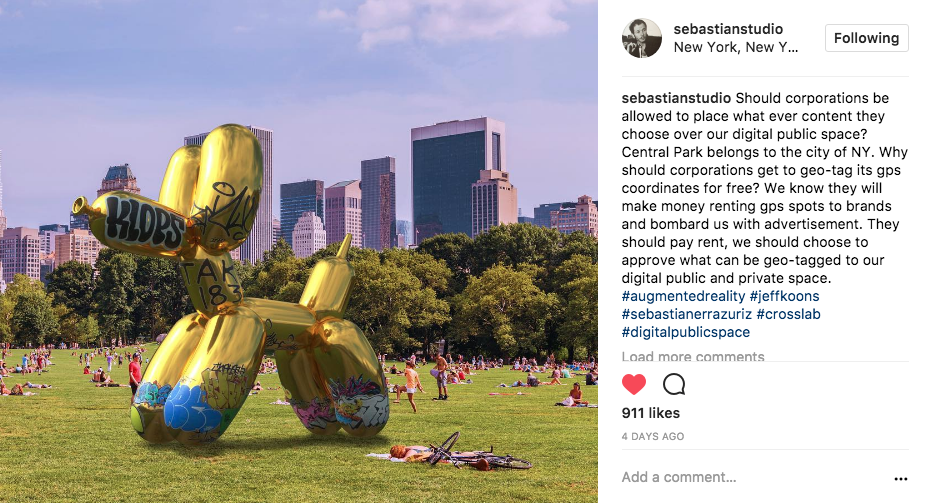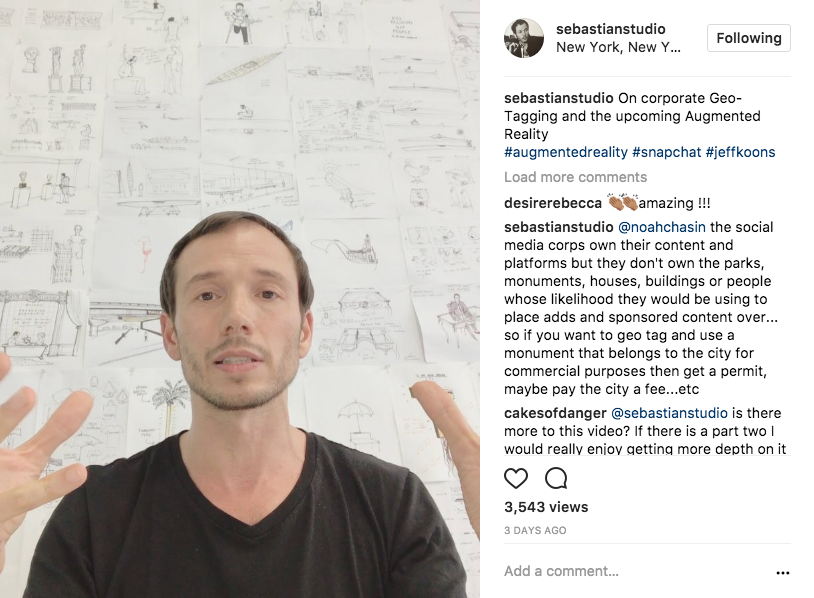Recently, I had the pleasure of hearing performance and new media artist Amir Baradaran of Columbia's Computer Graphics and User interface Lab talk about one his personal projects, Frenchising Mona Lisa. In 2011, Baradaran installed a 52-second performance streaming live over Leonardo da Vinci's Mona Lisa using an Augmented Reality (AR) Smartphone application where she unfurls her hair and wraps a French flag around herself in the form of a hijab. Baradaran brought to light a contradiction in French society that seems to tolerates the scarf around Mona Lisa's head (or, say, those made by Hermès and worn by women along the Rue Saint-Honoré) with the banning of the hijab in public schools.
This project at the Louvre Museum caught my attention because it was less about gaming, less an educational tool and more about social commentary. Even though this project is six years old, a couple issues seem ever prescient: the use of VR/AR as a viable medium for artists; and the ownership of physical digital locations.
Recently, Snapchat launched ART, a new Lens inside the multimedia platform that places digital artwork and sculptures of artists into geo-tagged physical spaces in the public realm. Their first partnership with Jeff Koons places his artworks in various cities around the world including Champ de Mars, Paris; Hyde Park, London and Copacabana, Rio de Janeiro Brazil. A day later, artist Sebastian Errazuriz uses augmented reality to "vandalize" Koons' Balloon Dog by placing a 3D digital recreation on top of a photo of the same geo-tagged location.
Errazuriz is asking some interesting questions about how our digital public space should/could be managed: should AR experiences be governed by similar rules to those renting out physical spaces (public or private)? should corporations be allowed to place whatever content they choose over our digital public space? should they be able to do this for free while bombarding us with their advertising or whatever? should we be able to choose or approve what can or cannot be geo-tagged to our own digital public space?
Last summer Pokémon Go, a location-based augmented reality mobile game took the country by storm and had a major impact on the public realm. For now, let's forgo the apps ability to track your location, access your phone’s camera and all of your personal information. Urban planners rejoiced at the millions of people who flocked to the streets, shopping malls and landmarks looking for monsters and Pokéstops, breathing life into underutilized public spaces and proving that people will walk for the right incentives.
Within weeks, sensitive locations like Arlington Cemetery and the Holocaust Memorial Museum asked players to avoid "hunting for monsters" on their sites and issued statements via social media:
We do not consider playing "Pokemon Go" to be appropriate decorum on the grounds of ANC. We ask all visitors to refrain from such activity.
— Arlington Cemetery (@ArlingtonNatl) July 12, 2016
Niantic, the company responsible for Pokemon Go removed the PokéStops and gyms from the Holocaust Memorial Museum in Washington DC at the museum's request, even though they had no legal obligation to do so and set up a process for removing them from unwanted locations.
Pokemon Go request form for removing PokéStops
This again begs Errazuriz's question regarding our (public or private property owners/managers and the users of these spaces) ability to choose or approve how our digital public space is used and the current protocol for displaying art (or whatever these monsters are categorized as). Can similar processes be appropriated from urban planners and policy makers to help inform future digital public space management?
Pokemon Go | PokéStop near the North Pool at the 9/11 Memorial (Source: New York Daily News)
Currently, the protocol for displaying art in the public realm requires consultation with the owner, manager or government agency responsible for the public or city-owned space. For example, projects in privately owned buildings (such as museums, opera houses, shopping malls) must obtain permission from the building owner; while projects on the street must obtain a street activities permit from the police department.



